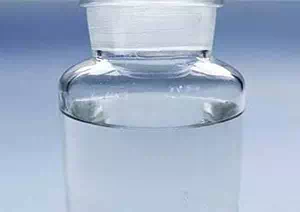All Categories


1-Dodecanethiol CAS 112-55-0,1-Dodecanethiol, CAS 112-55-0
Chemical Name: 1-dodecanethiol (Also known as: n-dodecanethiol, Lauryl mercaptan, dodecanethiol)
CAS : 112-55-0
Formula : C12H26S
Mol. wt. : 202.4
EINECS : 203-984-1
| CAS | 112-55-0 |
| Molecular formula | C12H26S |
| Molecular weight | 202.4 |
| EIENCS | 203-984-1 |
| Form | Liquid |
| Melting point | Store below +30°C. |
| boling point | 266-283 °C(lit.) |
| Density | 0.845 g/mL at 25 °C(lit.) |
| Solubility | IMMISCIBLE |
| PKA | 10.49±0.10(Predicted) |
| Color | Clear |
| Storage temp |
Chemical Name: 1-dodecanethiol (Also known as: n-dodecanethiol, Lauryl mercaptan, dodecanethiol)
Molecular formula: C₁₂H₂₆S
Molecular weight: 202.40 g/mol
CAS Number: 112-55-0
EINECS number: 203-984-1
Appearance: Water-white to light yellow liquid with a slightly special odor (may turn yellow if left for a long time)
Thermal stability
It decomposes at high temperatures to produce hydrogen sulfide (H₂S) and sulfur oxides, and is flammable when exposed to open flames (flash point 87℃).
Boiling point varies with pressure: 165-169℃ (5.2 kPa).
Chemical properties:
It reacts violently with strong oxidants and alkali metals. Avoid contact with acids and reducing agents.
It is prone to oxidation in the air and decomposition is accelerated by light. It needs to be stored in a sealed container away from light.
Polymer material polymerization regulators (accounting for more than 70% of the demand) :
Rubber industry: It is used for emulsion polymerization of styrene-butadiene rubber and nitrile rubber, adjusting the molecular weight distribution and improving the uniformity of the product (0.3-0.5kg is consumed per ton of rubber).
Resin modification: As a chain transfer agent in ABS resin, it improves processing fluidity and impact resistance.
Surfactants and additives:
It is used as an additive in detergents and lubricating oils to enhance decontamination ability and stability.
Synthesis of medicine and pesticides
It is used as an intermediate to synthesize fungicides, insecticides and pharmaceutical preservatives
Health hazard:
Acute toxicity: Transcutaneous LD₅₀ in rabbits =2000 mg/kg; Strongly irritating to eyes, skin and breathing tools. Inhaling at high concentrations can cause coma.
Chronic effects: Long-term exposure can cause dermatitis and asthma (a potential carcinogen of WHO Group 2B).
Protective measures:
Operation protection: Wear a gas mask, chemical-resistant gloves (made of nitrile/fluororubber) and goggles.
Leakage treatment: Adsorb with activated carbon. Direct contact is prohibited. Collect in a well-ventilated environment.
Storage requirements:
Seal and avoid light. Store in a cool place at ≤25℃, with a relative humidity of less than 75%, and keep away from oxidants.
* Prompt reply and 24 hours online, professional team to provide best price and high quality product.
* Sample testing support.
* Every batch of products will be tested to ensureits quality.
*The packing also can be according the customers` requirment.
*Any inquiries will be replied within 24 hours.
*we provide Commerical Invoice, Packing List, Bill of loading, COA , Health certificate and Origin certificate. If your markets have any special requirements, let us know.